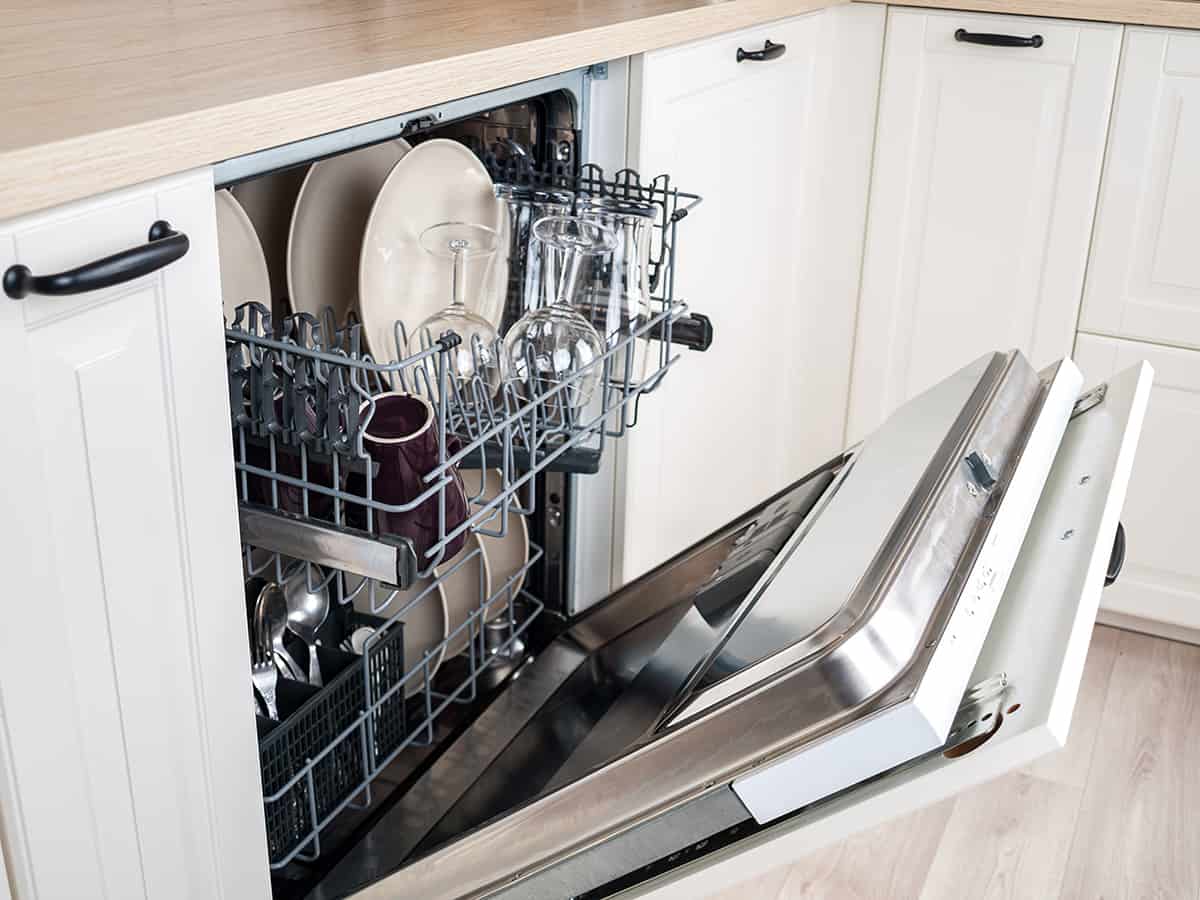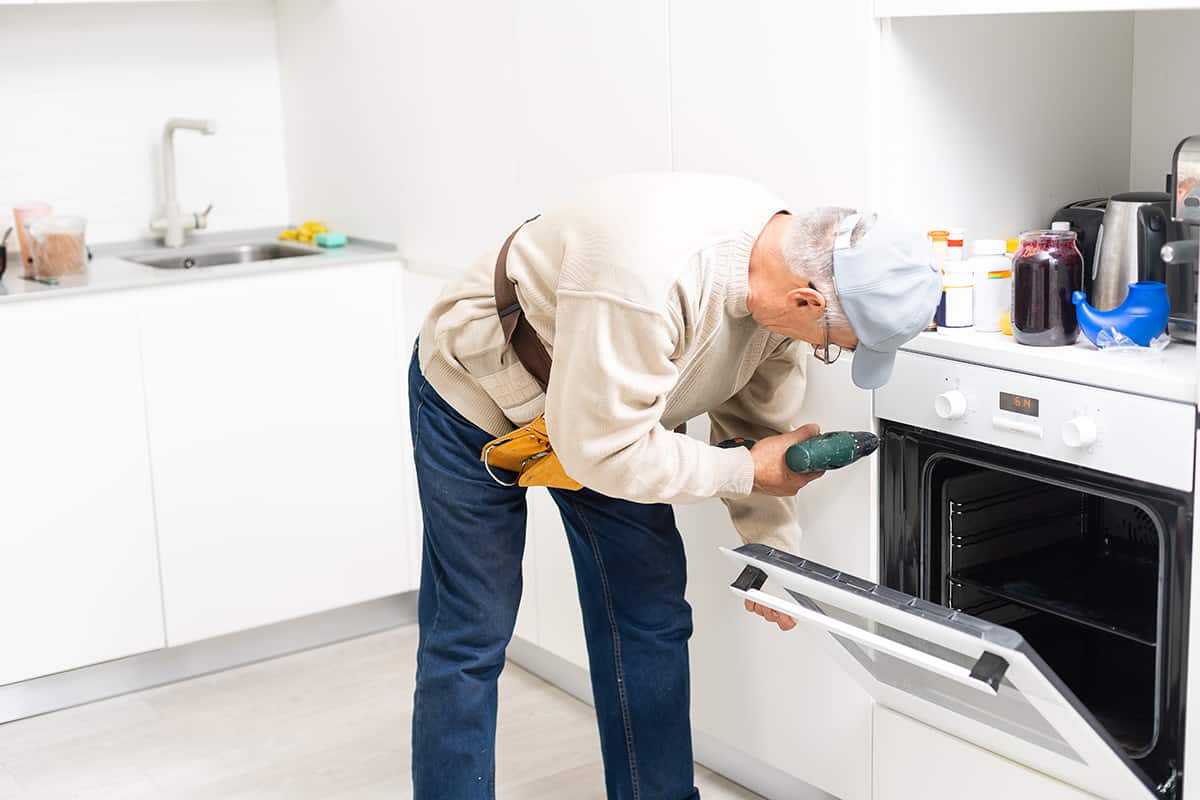Bosch dishwashers are known for their ultra-low noise output levels and top-notch cleaning performance. However, one problem that many new customers face is their Bosch dishwashers failing to drain water. So, what is the root cause of this problem and, more important, how do we fix it?
If your Bosch dishwasher doesn’t flush water as it’s supposed to, there’s a good chance that there’s a clog somewhere. Check the filter, garbage disposal, drain hose, drain pump, or air gap, and remove any solid debris before activating your dishwasher again.
In this brief guide, I will cover the various causes for why a Bosch dishwasher doesn’t leak, as well as provide different troubleshooting methods.
Why Doesn’t My Bosch Dishwasher Drain?
After a washing cycle, the water inside the dishwasher is supposed to be flushed out into a garbage disposal. If everything goes smoothly, you should not notice a puddle of water accumulated at the bottom of your dishwashing unit.
But over time, you might find stagnant water residing at the bottom, which, if you continue to wash dishes in the dishwasher, can overflow and ruin your beautiful hardwood floors.
In general, there are four main reasons why your Bosch dishwasher doesn’t drain water properly—namely, the dishwasher was installed incorrectly, one of its internal components is damaged, you didn’t load the dishes in a correct fashion, or there’s a blockage somewhere.
Let’s examine these root causes and the troubleshooting methods one at a time.
Incorrect Installation
Bosch advises that you seek the help of trained professionals to install a dishwasher. However, if you want to save on cash and do it yourself, you are more than free to try. That said, there’s a chance that, without proper training, you might have made a mistake sometime during the installation process.
Some of the most common problems found in DIY dishwasher installation jobs include using the wrong drain pipe size, failing to properly install a shutoff valve, and standing the dishwasher at an uneven height—all of which can contribute to standing water in your dishwasher.
Troubleshooting
- Disconnect the dishwasher and unplug the power cable
- Disconnect all of the pipes, hoses, and valves from the dishwasher
- Make sure the dishwasher installation kit has every necessary component
- Install every component according to the instruction manual
- Check the height settings of the feet to ensure that it sits perfectly perpendicular to the floor
- Reinstall all of the pipes and valves, and plug the power cord back in
Damaged Component(s)
Even if you hire a professional technician to install your Bosch dishwasher, there’s a tiny chance that some of the components may have been damaged in the process. Luckily, there are warranties in place, but if you installed the dishwasher on your own, you’re pretty much out of luck.
Dishwasher components that are directly linked to the draining process are the drain pump, the drain line, and the filter. These should be the first things you look at before coming up with a diagnosis.
Troubleshooting
- Disconnect the dishwasher and unplug the power cable.
- Disconnect all of the pipes, hoses, and valves from the dishwasher.
- Remove the internal racks and compartments to gain better access to the drain pump.
- Remove the dishwasher from its spot in your kitchen to gain better access to its inner workings.
- Examine the drain pump to make sure it works as it should.
- Examine the drain line and the filter to ensure that there are no cracks or clogs.
- If you notice any significant problems with any of these components, call Bosch’s customer service center.
Improper Dish Arrangement

This is one of the most common occurrences, but it’s also the easiest to fix. Improper dish arrangement inside the dishwasher may lead to standing water at the bottom of the dishwasher. This is especially likely to happen if any dishware or utensils have fallen off their racks and have landed at the bottom.
If you look at the Bosch dishwasher manual, you should find a section that explains the proper way of loading the dishwasher.
Troubleshooting
- Read the Bosch dishwasher instruction manual cover to cover.
- Find the section that describes how to load the dishwasher racks and compartments properly.
- Follow those instructions to the letter, making sure that you don’t misplace any bowls, spoons, or utensils.
- Make sure that the racks and compartments are properly installed and do not move during the washing process.
Blockage
This is another common reason why dishwashers of any make and model will fail to drain water. Blockages found at the bottom of the dishwasher, garbage disposal, filter, drain pump, and air gap can prevent water from draining properly, if at all.
Blockages are something you will have to live with, even with a properly installed dishwasher.
Troubleshooting
- Unplug the Bosch dishwasher and garbage disposal.
- Check the garbage disposal for buildup. If you see anything, use a long utensil to clear it out.
- Check the garbage disposal’s blades. If you see anything, use a long utensil to clear it out.
- Remove the parts connected to the drain filter.
- Rinse the drain filter’s basket with clean water to get rid of any soapy or solid residue.
- Reinstall the drain filter.
- Disconnect the drain hose.
- Inspect the drain hose for cracks, bends, and tears.
- Inspect the inside of the drain hose for blockages. You can use straightened coat hanger or a long utensil to break down the clog.
- Rinse the drain hose thoroughly before reinstalling.
- Look for the drain pump according to the dishwasher’s instruction manual.
- Get rid of any solid buildup with a long tool.
- Reinstall the drain pump.
- Pour a 1:2 solution of baking soda and vinegar down the drain and let it sit for 15 minutes.
- Flush the vinegar solution with warm water.
- Remove the plastic lid covering the air gap.
- Use tweezers to manually remove any blockages.
- Run water through a small tube into the air gap and use a pipe cleaner to scrub the inside.
- Reassemble the air gap.
- Plug in the dishwasher and all of the pipes, hoses, and valves.
- Give it a test run to check whether water still doesn’t drain. If this is the case, you may need to have a professional inspect your dishwasher.






